|
|
Post by omgurl40 on Dec 8, 2015 3:15:12 GMT
I'm an avid cyclist and have grown interested in the cycling of the late 19th and early 20th century. I've found a few pics around the web featuring people of the time, including some of whom have made appearances on the show. I thought to share a few of them and I hope you enjoy them! Arthur Conan Doyle was a passionate wheelman (wheel was the common term for a bicycle in those days) and enjoyed riding whenever he could, believing it to be good for a person both physically as well as mentally: When the spirits are low, when the day appears dark, when work becomes monotonous, when hope hardly seems worth having, just mount a bicycle and go out for a spin down the road, without thought on anything but the ride you are taking.
 |
|
|
|
Post by omgurl40 on Dec 8, 2015 3:29:12 GMT
HG Wells saw the bicycle as one of the vehicles of the future. " Cycle tracks will abound in Utopia" is but one of the things he wrote regarding the bicycle. His most well known quote regarding bicycles is this:
"When I see an adult on a bicycle, I not longer despair for the human race"

W ells and his wife Jane on an interesting tandem |
|
|
|
Post by snacky on Dec 8, 2015 6:49:57 GMT
I'm an avid cyclist and have grown interested in the cycling of the late 19th and early 20th century. I've found a few pics around the web featuring people of the time, including some of whom have made appearances on the show. I thought to share a few of them and I hope you enjoy them! Arthur Conan Doyle was a passionate wheelman (wheel was the common term for a bicycle in those days) and enjoyed riding whenever he could, believing it to be good for a person both physically as well as mentally: When the spirits are low, when the day appears dark, when work becomes monotonous, when hope hardly seems worth having, just mount a bicycle and go out for a spin down the road, without thought on anything but the ride you are taking.
 I believe in the Forensics section, there's an article on lessons in using the bicycle as a weapon of self-defense! Bicycle-fu! |
|
|
|
Post by omgurl40 on Dec 9, 2015 2:05:17 GMT
I'm an avid cyclist and have grown interested in the cycling of the late 19th and early 20th century. I've found a few pics around the web featuring people of the time, including some of whom have made appearances on the show. I thought to share a few of them and I hope you enjoy them! Arthur Conan Doyle was a passionate wheelman (wheel was the common term for a bicycle in those days) and enjoyed riding whenever he could, believing it to be good for a person both physically as well as mentally: When the spirits are low, when the day appears dark, when work becomes monotonous, when hope hardly seems worth having, just mount a bicycle and go out for a spin down the road, without thought on anything but the ride you are taking.
 I believe in the Forensics section, there's an article on lessons in using the bicycle as a weapon of self-defense! Bicycle-fu! I love how the article gives instructions on how to hit an "...objectionable small boy" as you're riding as well as defending oneself from an adult attacker! One get the sense the author didn't care for children much! |
|
|
|
Post by omgurl40 on Dec 9, 2015 2:12:30 GMT
By all accounts, Henry Ford remained a cyclist throughout his life, riding regularly after dinner into his 70s. As a young man, he road to his work as an engineer in Detroit on a bicycle daily. 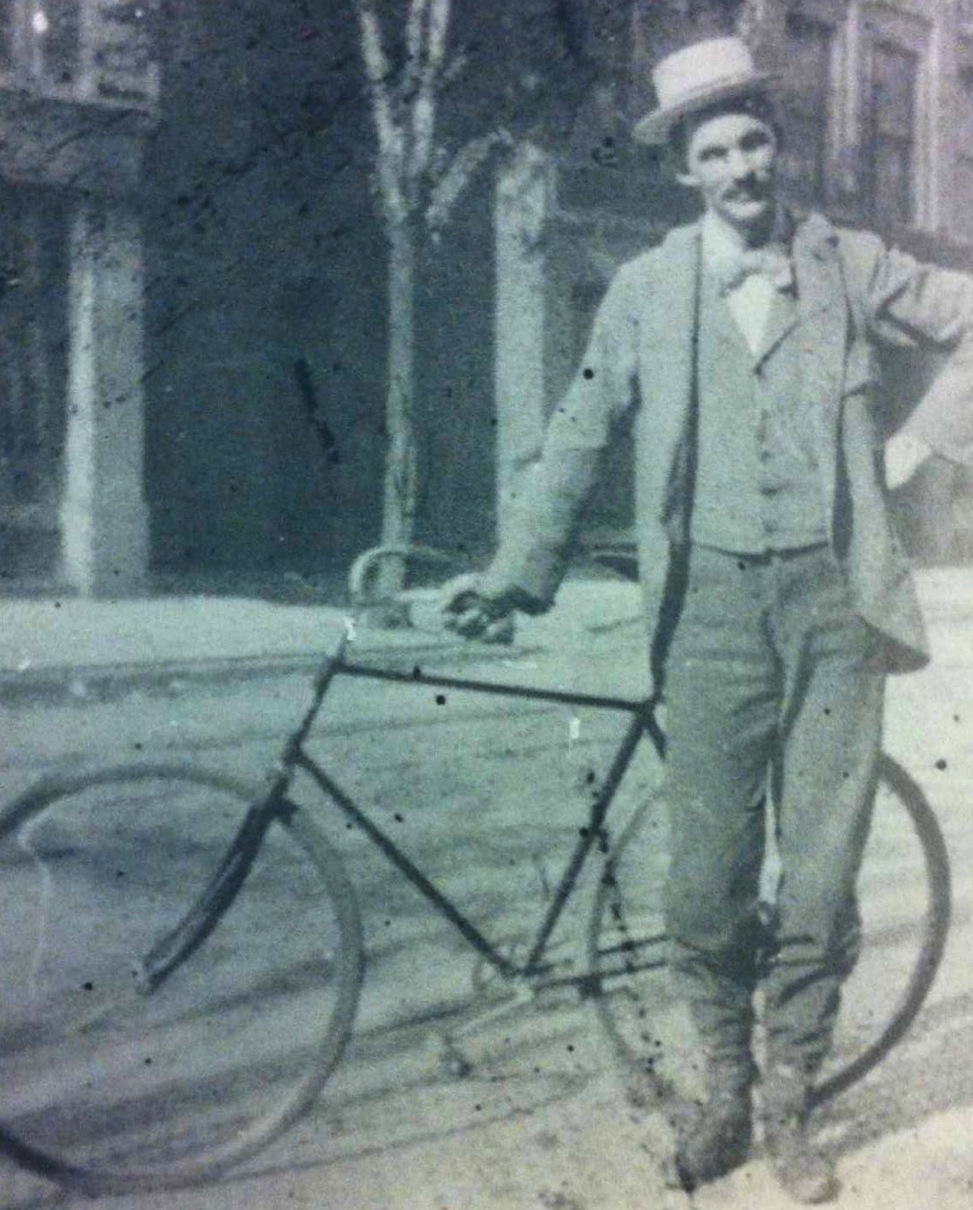 |
|
|
|
Post by omgurl40 on Dec 13, 2015 2:07:22 GMT
In 1895, while a police commissioner in New York City, Theodore Roosevelt created the New York Police bicycle patrol, known as the "Scorcher Squad", who were tasked with stopping scorchers (those who raced at high speeds through the streets) and also proved adept at catching up with runaway wagon and carriages as well. From TRs autobiography: The members of the bicycle squad, which was established shortly after we took office, soon grew to show not only extraordinary proficiency on the wheel, but extraordinary daring. They frequently stopped runaways, wheeling alongside of them, and grasping the horses while going at full speed; and, what was even more remarkable, they managed not only to overtake but to jump into the vehicle and capture, on two or three different occasions, men who were guilty of reckless driving, and who fought violently in resisting arrest. They were picked men, being young and active, and any feat of daring which could be accomplished on the wheel they were certain to accomplish. I think Murdoch would appreciate the following image as then president Roosevelt is riding in an electric automobile (TR was the first American president to ride in an automobile) while members of the police ride shaft driven bicycles as a security detail for him. 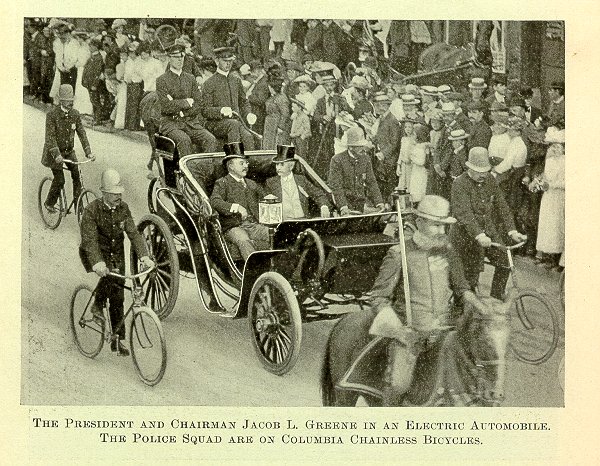 |
|
|
|
Post by omgurl40 on Dec 14, 2015 19:33:28 GMT
Annie Get Your Bike! The world famous trick-shot artist, Annie Oakley, incorporated cycling into her act with Buffalo Bill's Wild West Show as well as various other circuses during her career. From 1894 journal ‘The Bearings,’ this pic is of Annie Oakley, famous markswoman, who was also an ardent wheelwoman, biking 20 miles a day. 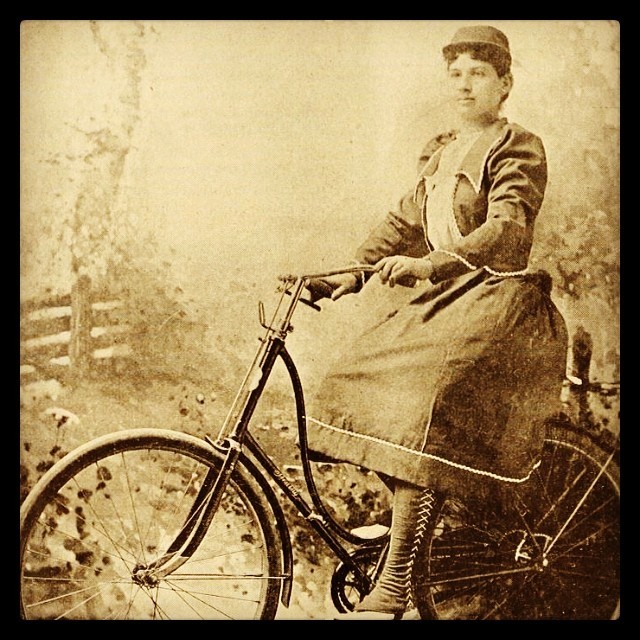 She designed her riding costume herself; hooking her skirt to her leggings so it wouldn’t ride up as she pedaled her bike with both hands on her rifle shooting targets. Her first wheel was a 35 pound woman’s “Premier” bicycle that she bought in Glasgow. The press began calling her the “Little Cycling Sure Shot.” She took to riding enthusiastically – riding errands in London, touring in the morning when she had the time, and planning tricks for her show that would incorporate her bike.  An advertisement for Sterling Bicycles featuring Annie. She sure did have great taste in hats - so cute!  |
|
|
|
Post by omgurl40 on Dec 16, 2015 4:21:02 GMT
The Globe Girdlers In 1890, fresh out of college, Thomas Allen and William Sachtleben set out to ride across the world on bicycles. They also carried with them two of Kodak's portable cameras of the day and took over two-thousand photographs along the way that documented life in places many people in the west had never seen at the time. A lot of people they met along the way had never seen bicycles before. The journey took them three years and made them celebrities across the US.  Here they are in China in 1892. They chronicled their adventure in a book published in 1894 called Across Asia On a BicycleAs a consequence of their success and fame, and with the support of Outing magazine, nationally known high wheel racer Frank Lenz switched to the "safety" bicycle and declared he would ride around the world solo. Sachtleben and Allen had ridden from west to east but Lenz chose to go from east to west, leaving in 1892 while Sachteben and Allen were still finishing their ride. Unfortunately for Lenz, his trip did not end successfully. He vanished in Turkey in 1894, most likely killed by bandits in a dangerous part of the region. I heartily recommend the book The Lost Cyclist, by David Herlihy, not only for the history of cycling and the incredible daring of Lenz but also for the story of the discovery of the Armenian genocide. Below is the last known photo taken of Lenz:  Equally as daring was Annie Londenderry. Annie Cohen Kopchovsky, mother of three, reinvented herself as an adventurer and entrepreneur. She willingly adopted a new last name as the Londenderry Spring Water Company sponsored her ride across the world so long as she rode with their advertising on her bicycle. She did that (and received further funding for the trip by carrying different advertising along the way). After leaving New York in 1894 in a skirt, she switched to bloomers for the rest of her riding. Her journey took less time as she didn't ride as far but used steamships to cover some areas. Despite this, she was a sensation and made the rounds of the lecture circuit upon returning home in 1895. 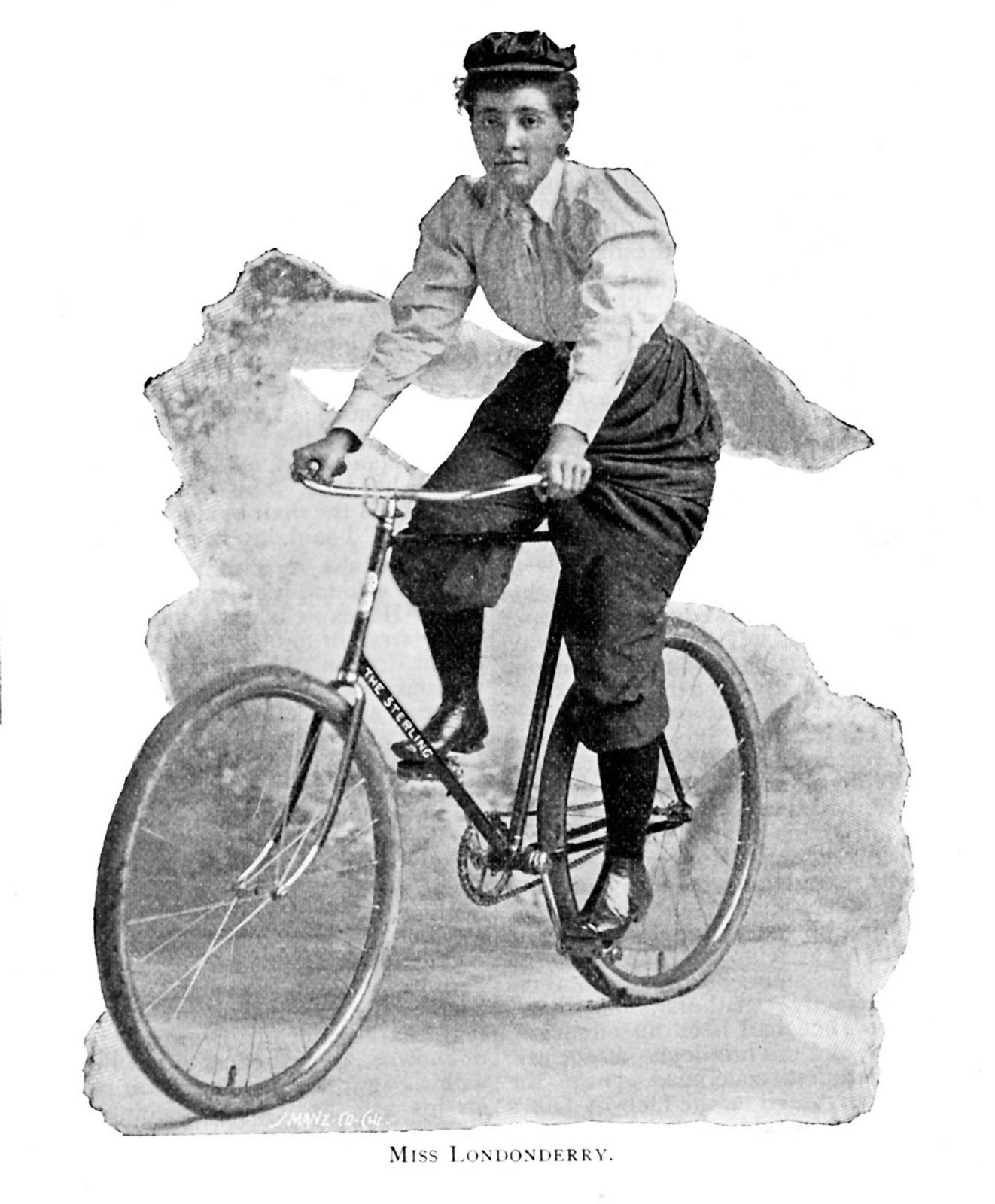 |
|
|
|
Post by omgurl40 on Dec 24, 2015 3:59:49 GMT
Ice Bikers of the Klondike During the Klondike Gold rush, it was not surprising to see bicycles being ridden along the same trails that horses and wagons and dogsleds went down. They never replaced the sleds and wagons but many an adventurous sort made use of the bicycle to get around. There was even a specially designed "Klondike Bike" that had a second set of wheels that folded down so it could be a wagon: ridden to the prospecting site, pulled back loaded by hand. 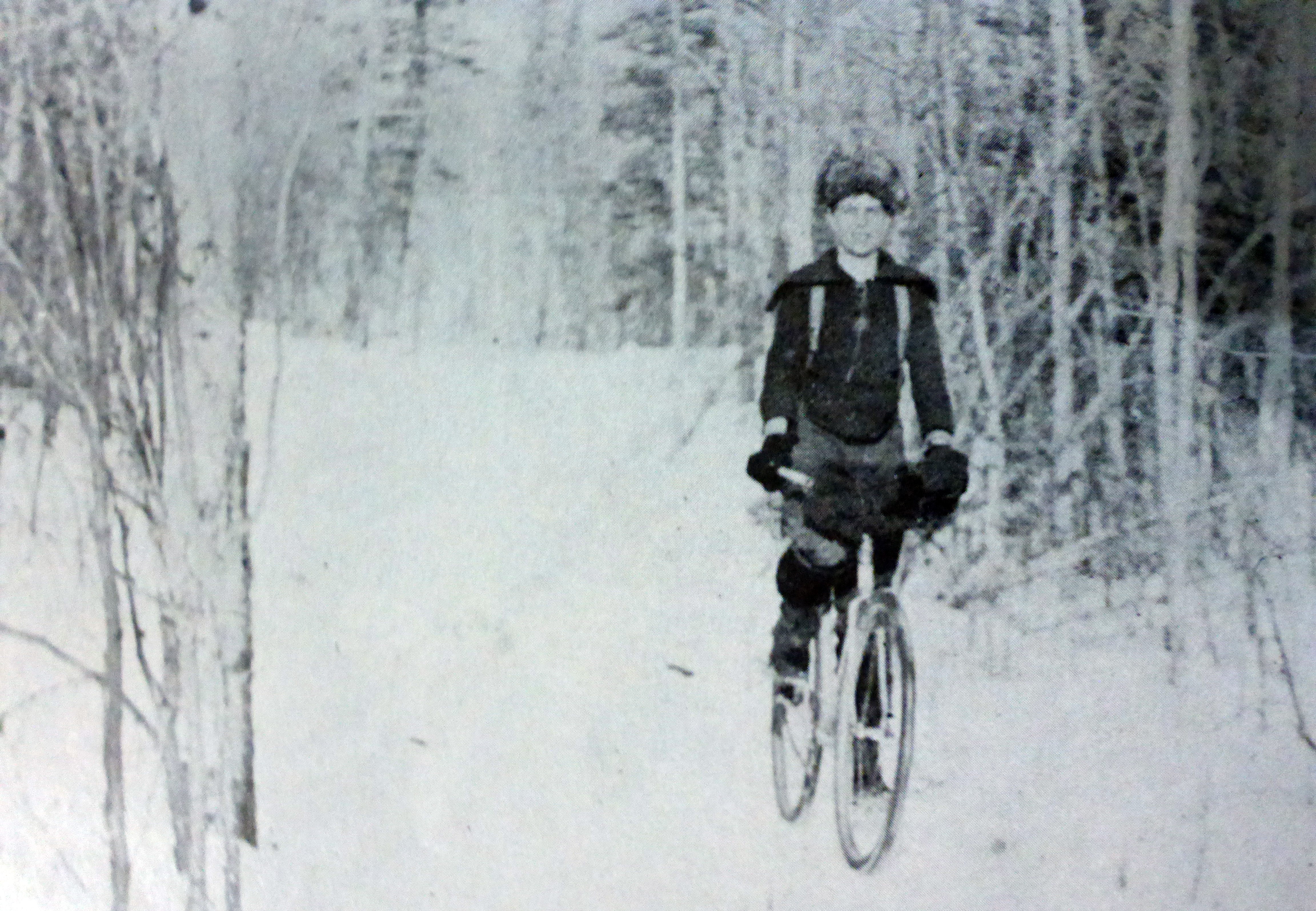 Almost looks like Jack London!  Making good use of both wheel and sled |
|
|
|
Post by lizmc on Jan 19, 2016 3:08:45 GMT
|
|
|
|
Post by lovemondays on Jan 20, 2016 17:36:30 GMT
|
|
|
|
Post by lizmc on Jan 21, 2016 3:33:01 GMT
I'd have thought cycling nude , for either gender, would be somewhat........uncomfortable........there is a reason cycling pants are padded..... |
|
|
|
Post by lovemondays on Jan 21, 2016 23:16:57 GMT
I'd have thought cycling nude , for either gender, would be somewhat........uncomfortable........there is a reason cycling pants are padded..... Hahaha!! Agreed.. |
|
|
|
Post by omgurl40 on Feb 7, 2016 2:55:10 GMT
it's African American History month in the US. Thought I'd share some images and history of black cyclists here. Murdoch has already featured "Major" Taylor in the Tour De Murdoch episode from season 7. Taylor would be the first African American world champion in any sport, winning the 1 mile world title in Montreal in 1899. "Little Chocolate" George Dixon was the first non-white world champion in any sport, winning the featherweight title in 1891. Dixon was also the first Canadian born boxing champion and is seen in Glory Days

The 25th Infantry was chosen to take part in an experiement in 1896 to see how well a bicycle could be used as a military machine. The all black unit would take part in a challenging ride from Fort Missoula in Montana to St Lous, MO. A ride of 1900 miles at a time when there were no paved roads. The men often rode along the railroad tracks - this was in the day of all steel bikes with no suspension. More information about their amazing journey here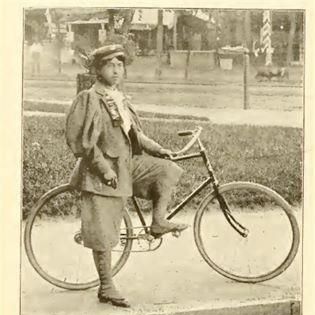 Kittie Knox has a story that more people should know! Here was a woman of great strength and fortitude who challenged social norms of the day in terms of what she rode while riding as well as challenging the racist attitudes of the cycling groups of the day. She also proved to be a cyclist of great skill, finishing 12th out of 50 in a 100 mile race. She died tragically young at the age of 26. Boston Globe Article about Kittie Knox and her rediscovered legacy |
|
|
|
Post by bookworm1225 on Feb 11, 2016 0:34:39 GMT
*winces at all the bicyclists, and bicycles, on the fragile Yellowstone terrace*
|
|